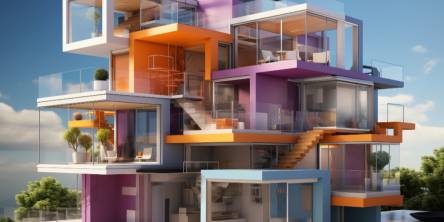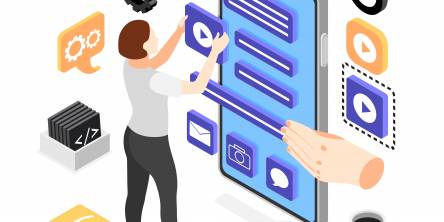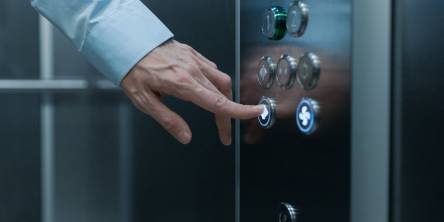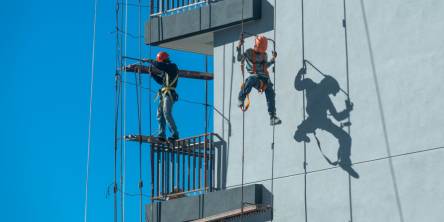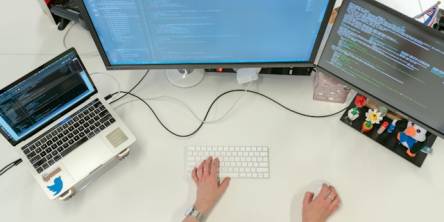How Architectural Designing and Construction would be affected by 3D visualization in Future?
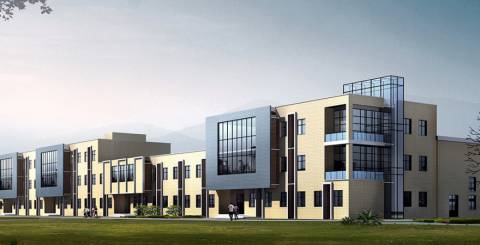
The architectural landscape has been witnessing steady evolution in the past few years. Styling, usage of materials, textural addition, and coloring elements are being upgraded. Designing and visualization of architectural projects too have evolved keeping pace with various trends. The technology has leapfrogged from 2D plans that were hand drawn to drafting done using computer programs. 3D visualization with the aid of 3D realistic models is the new trend.
3D printing and VR (Virtual Reality) are being much talked about these days. They have ushered in immersive designing to the forefront. The creativity of designers is being complemented by groundbreaking technologies. Even before the actual construction has happened, we can now walkthrough the virtual model of the building and explore its various dimensions. Soon we will have the capability of building small scale construction projects within a day with a particular machine. The trends in designing and architecture are getting updated so quickly that we are left wondering of the next imminent trend.
3D Architectural Rendering: Its Advantages
In order to design and construct a building, many stakeholders and service providers have to be involved. The perspectives of architects, engineering team, planning members, designers, contracting partners, and customers have to be incorporated. Their goals have to be reflected in the design and expertise has to be leveraged.
To accommodate the views and expert areas of all within a single project can be challenging. However, with 3D renderings related tools, you can consolidate the ideas of each incoherent in an easy to understand manner. The vision should be clear and when presented before others, it should be readily apparent.
Manipulation of 3D renderings in real time is possible. The transitioning of concepts into ideas ready to be implemented happens quickly. You can visualize the design of the construction on the digital portal in a photorealistic manner as if you are standing before the actual building. This helps in saving time, cost, and material wastage as mistakes, deviations, and design flaws become readily visible before starting of construction.
The qualitative quotient of architectural projects and the speed of execution are being taken to the next level with 3D visualization. The cutting-edge CGI (Computer Graphics Imagery) tools are helping architects to fast-track the designing process and in testing the viability of their visualization ideas during the construction phase.
The architectural industry is already being influenced by high-end CGI tools. However, architects can take their design related ideas to newer heights of materialization with the help of advanced 3D visualization capabilities. These top-notch technologies are geared towards rendering the design and construction process quicker and more efficient.
With the help of sophisticated 3D visualization techniques, collaboration on digital engineering phase, quick production of building parts, and dramatic reduction of errors during construction would become possible. The immersive experience offered during the visual presentation of project ideas would help in getting approvals and statutory clearances for upcoming projects easier. The latest in technology would be based on innovation.
How Future of Architecture Would Change with 3D visualization?
- Quickening of Construction Process
3D printing and rapid prototyping have a strong connection. 3D printers allow anything that computer graphics artists can develop within the 3D model. To test and manufacture construction elements and equipment, quicker and efficient prototyping is in active use. The same is now being used for building houses.
In the future, 3D visualization would facilitate rapid construction. Constructions can be done on a massive scale through prototyping on the 3D printers. The building components would be 3D printed in parts. The assembling of the same can be done in various patterns depending upon the project’s needs. The outcome would be quicker and can be adjusted easily. In a matter of a few weeks, large skyscrapers can be constructed in the near future.
- Designing of Projects in real time
You would be facilitated to design projects in real time with the help of architectural VR. The VR software offers a digital platform for designing in a coordinated manner in real time. On a single project design, many architects can work at the same time.
Architects would need VR headsets connected to computers or just a standalone device for entering the collaborative space. Presently, the most sophisticated tool available for 3D visualization is InsiteVR. It comes packed with collaborative markups, synchronization of cloud models, voice exchanges, and controls for scaling and muting. Architects can interact with each other in VR space while building 3D models collectively. This causes the process to be completed quickly.
Architectural VR is particularly helpful for projects of large scale where tight schedules have to be met and where many specialists are required to leverage their skills. Some may be designing the plumbing system whereas others may be busy on electrical layout and ventilation. By utilizing the capabilities of VR and 3D visualization, entire cities would be completely digitally designed in the coming future.
- Creation of Immersive Experience
Architectural AR or Augmented Reality allows overlaying of digital matter on the real-life environment. It is not like VR where reality is completely replaced. AR app, AR headsets, smart glasses, etc. allow people to experience AR. Apart from these portable tools, more advanced tools would appear in future which would take 3D visualization to the next level.
AR technology can be leveraged for showcasing project to customers in a manner that there won’t be any scope of the doubt after the project has been viewed. With the help of AR apps, CG visuals can be laid upon real components of construction for demonstrating the process of building in the future as live during presenting the project. The viewers who would participate in the presentation can be part of the entire construction on the digital platform right from scratch to conclusion. With 3D rendering, clients can be made to understand how the project would be implemented in a phase-wise manner. The process of securing approval from statutory bodies would also be simplified and expedited.
- Eliminating the flaws in construction
There would be mixed reality (MR) apps which would blend the features of AR and VR for better 3D visualization. MR BIM apps permit overlaying of the architectural visual materials on the real-world environment which is typical to AR. Concurrently, they can be tied to physical objects similar to VR experience. With the help of immersive and holographic devices like the windows mixed reality headsets, this can be achieved.
Builders would use MR BIM applications in the form of guides. Tips can be taken for streamlining the construction process. Uploading of holographic plans, drafts of CAD, and 3D renderings to the MR apps can be done by architects. This would facilitate accurate following up of the instructions by the contractors and reconciliation of each step can be done with CG visuals. The MR device can be pointed on a particular construction element by the builder. The BIM app would showcase what has to be done with the piece from the perspective of project execution. Architects and builders would no longer suffer from misunderstandings. The design and execution flaws would be eliminated which would make the work stellar.
- Immersing Viewers with Captivating Animation
3D animated videos with architectural plans are primarily deployed for demonstrating ideas related to projects to clients during presentations. The animations can also serve as the content for creating video blogs. In coming days, just like mobile phones and PCs, VR goggles, helmets and apparels would be commonly used. 3D animations in VR would soon substitute all different types of video presentations.
In the future, 3D visualization would allow architects to avail of heightened walkthroughs and flythrough. VR animations would not be solely used for examination of the building’s exteriors but also facilitate the explorations of the environment surrounding the same. This would be similar to using the advanced features of Google Map. You would face no problem in selecting the site for upcoming construction or finalizing the design of landscapes.
VR animation would cause viewers to be fully engrossed in the project. Viewers can go about exploring and analyzing the location without having to be present at the site physically. Architects can interact with and exchange ideas with clients from offshore. They can organize meetings, talk about the details of projects, and can update the clients without requiring them to move out of office.
Conclusion
The concept of 3D visualization has gained much importance in the field of architectural designing and construction in the past decade. This is because of the huge benefits it renders to the respective industry. Accurate showcasing of the different property aspects, faster construction, cost saving, and increasing operational efficiency are some of the main factors why various architects and homeowners prefer using this technology. There is no arguing to the fact that till now it has helped the architecture industry to overcome various challenges. Hopefully, it would be continuing to do the same in the future with new advancements that lead to improvements in the architecture and design industry.
Similar Articles
Architectural 3D rendering price guide covering costs, factors, AI impact, and typical pricing for residential and commercial exterior and interior renders.
Most large organisations already know how hard enterprise application testing can be. You’ve got old and new systems talking to each other, custom code layered on vendor platforms
When it comes to working at heights, safety and efficiency are paramount. Aerial work platforms (AWPs) have revolutionized how professionals approach elevated tasks across countless industries, from construction sites to warehouse operations.
The modern age of customers expect constant availability, no matter what the offer. And for that, the market requires rapid innovation cycles. In such a high stakes environment, technology infrastructure is more than just a cost center.
When evidence seals fail, cases weaken. Explore how compromised chain of custody can derail investigations and jeopardize justice.
Compare hydraulic and traction residential elevators to find the best fit for your home. Learn how each system works, their pros and cons, space needs, energy use, and maintenance requirements.
Extend the lifespan of your commercial marina docks with proactive maintenance. Learn essential inspection routines, material-specific care, and safety tips to protect your investment and ensure long-term dock performance.
Learn the key factors in designing an engineered fall protection system. Discover how hierarchy of controls, task analysis, structural integrity, and fall clearance ensure safety and compliance.
Today, modern businesses face constant pressure to operate with maximum efficiency. This requires a technology infrastructure that is both agile and robust. However, the traditional model of on-premises data centers often has significant limitations. These legacy systems can drain valuable resources from teams.

